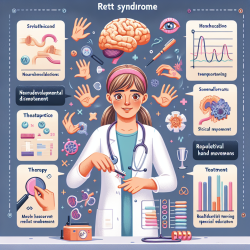Introduction
In today's fast-paced educational environment, students are often overwhelmed with academic pressures and social expectations. This can lead to academic burnout and social anxiety, significantly affecting their mental health and academic performance. However, recent research has shown that mindfulness training can be an effective tool in combating these issues. This blog will explore the findings of a study titled The effectiveness of adolescent-oriented mindfulness training on academic burnout and social anxiety symptoms in students: experimental research, and how practitioners can implement these findings to improve outcomes for students.
Understanding the Research
The study conducted a semi-experimental research design with a pretest-posttest control group to evaluate the impact of adolescent-oriented mindfulness training on high school students in Tehran. The sample consisted of 100 students who were divided into experimental and control groups. The results demonstrated that mindfulness training significantly reduced academic burnout and social anxiety symptoms in the experimental group compared to the control group.
Key Findings
- Mindfulness training was effective in reducing symptoms of academic burnout and social anxiety.
- Participants in the mindfulness group showed improved emotional regulation and decreased physiological tension.
- The training helped students become more aware of their present experiences, leading to better self-cognition and information processing.
Implementing Mindfulness in Practice
For practitioners working with students, integrating mindfulness techniques into therapy sessions can be highly beneficial. Here are some practical steps:
- Introduce Mindfulness Exercises: Begin with simple exercises such as focused breathing and body scanning to help students become more aware of their present moment.
- Encourage Regular Practice: Encourage students to practice mindfulness regularly, even outside therapy sessions, to reinforce their skills.
- Customize Techniques: Tailor mindfulness exercises to meet the specific needs of each student, considering their unique challenges and preferences.
Encouraging Further Research
While this study provides valuable insights, further research is needed to explore the long-term effects of mindfulness training on different age groups and diverse student populations. Practitioners are encouraged to participate in or conduct research that examines the broader implications of mindfulness in educational settings.
Conclusion
The findings from this study highlight the potential of mindfulness training as an effective intervention for reducing academic burnout and social anxiety among students. By incorporating mindfulness techniques into therapy, practitioners can help students achieve better mental health outcomes and improve their academic performance.
To read the original research paper, please follow this link: The effectiveness of adolescent-oriented mindfulness training on academic burnout and social anxiety symptoms in students: experimental research.










